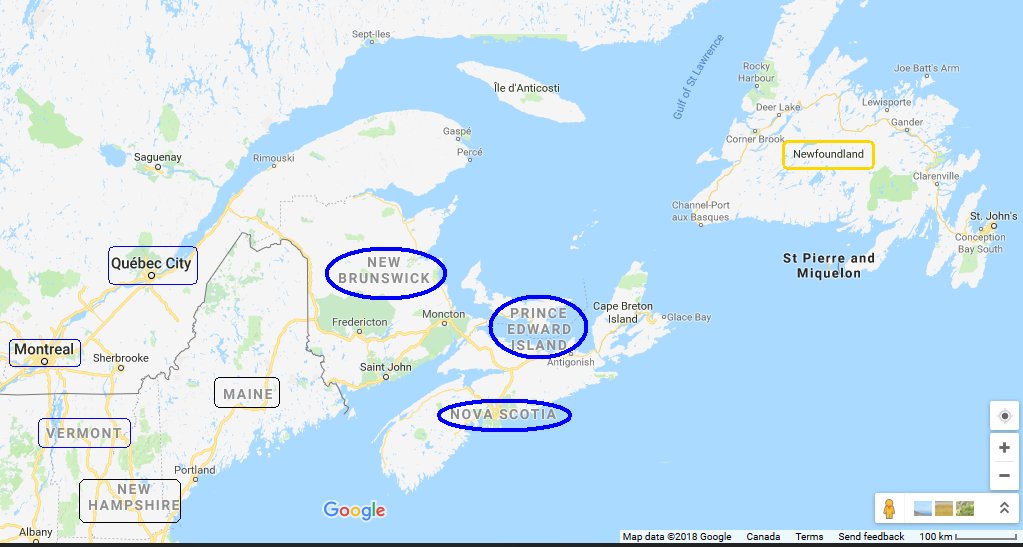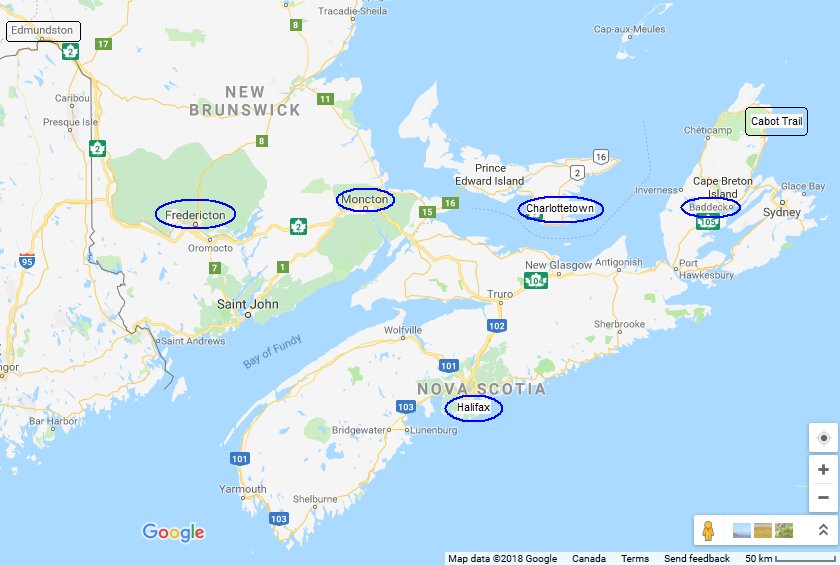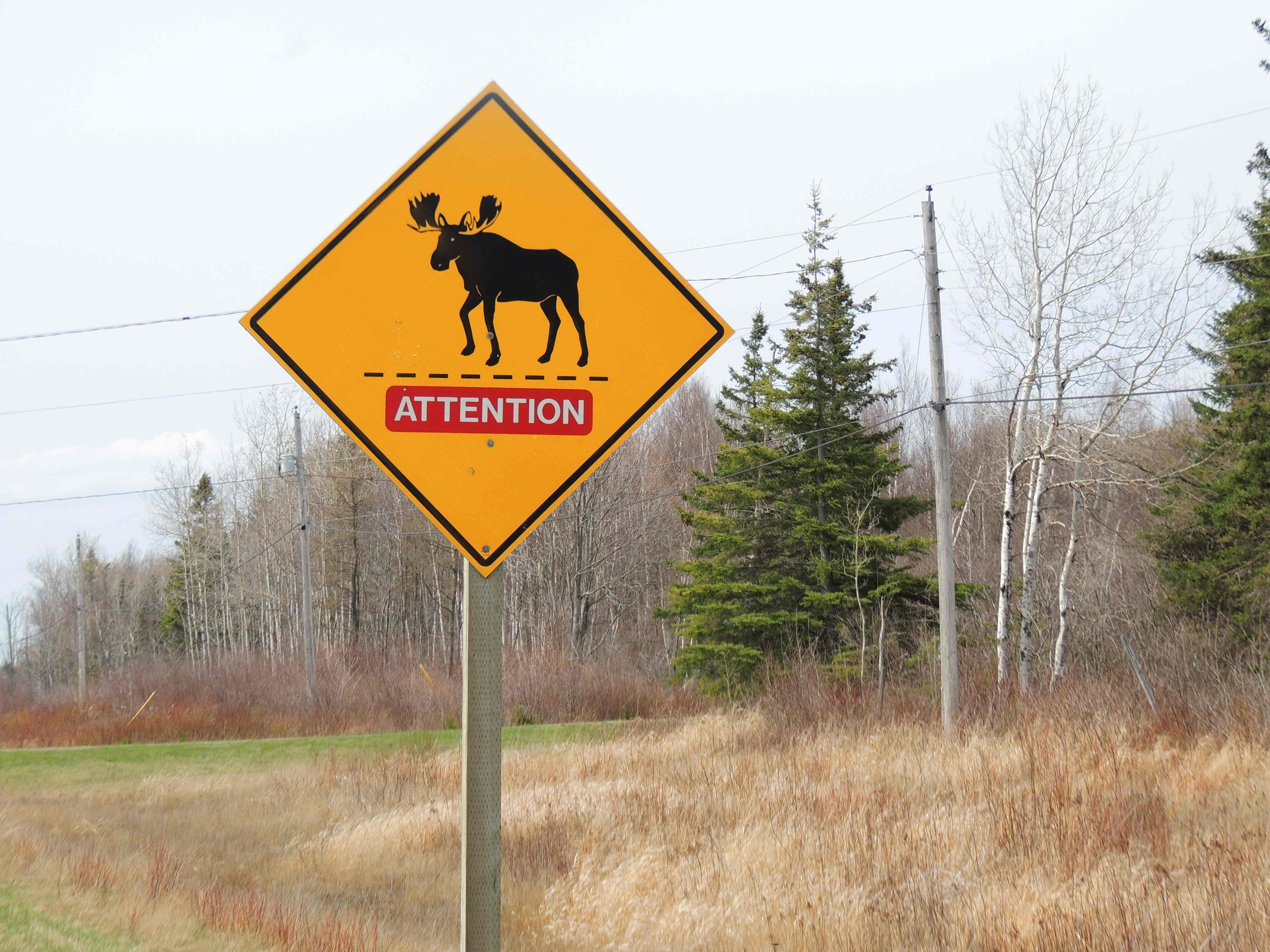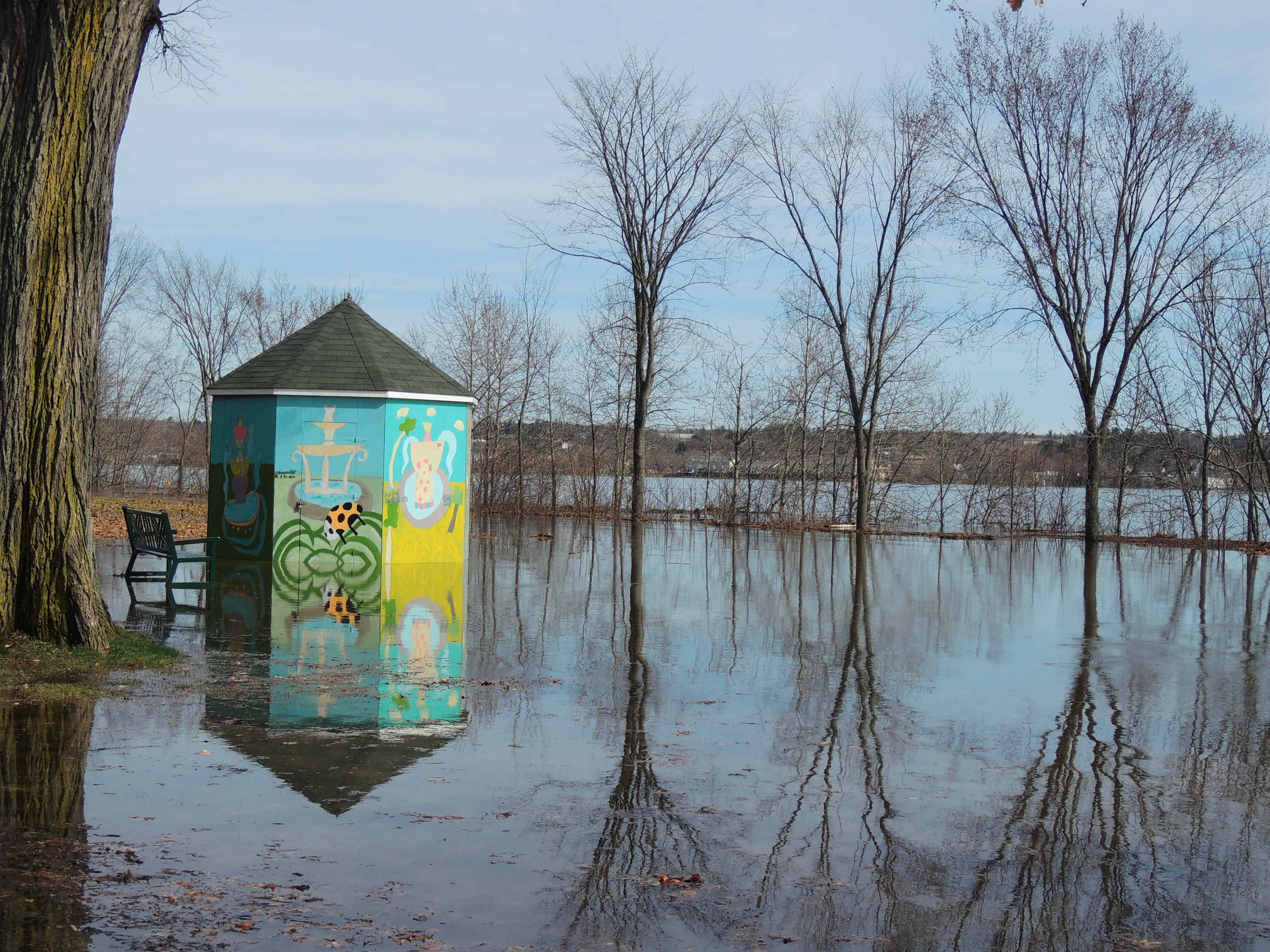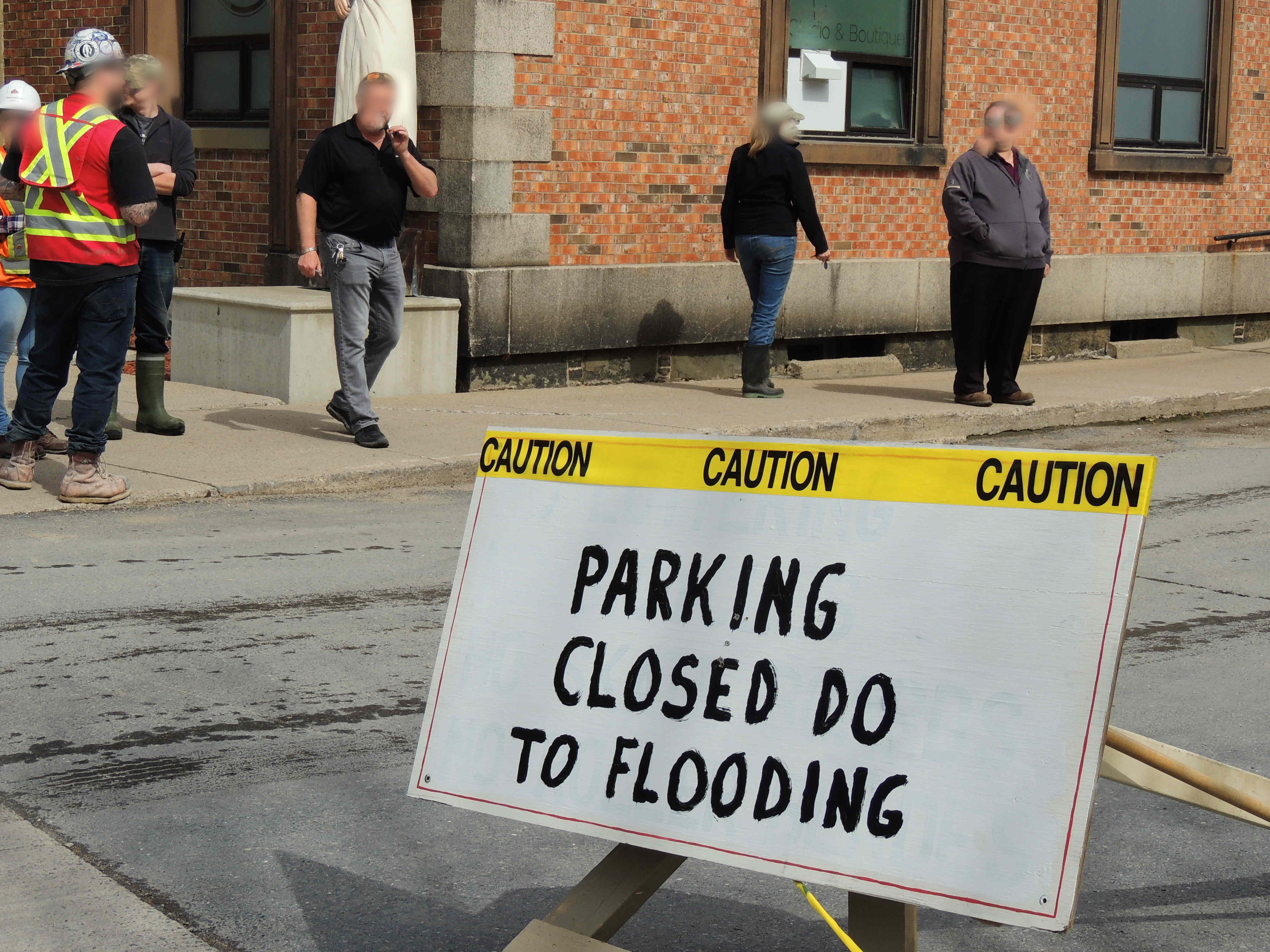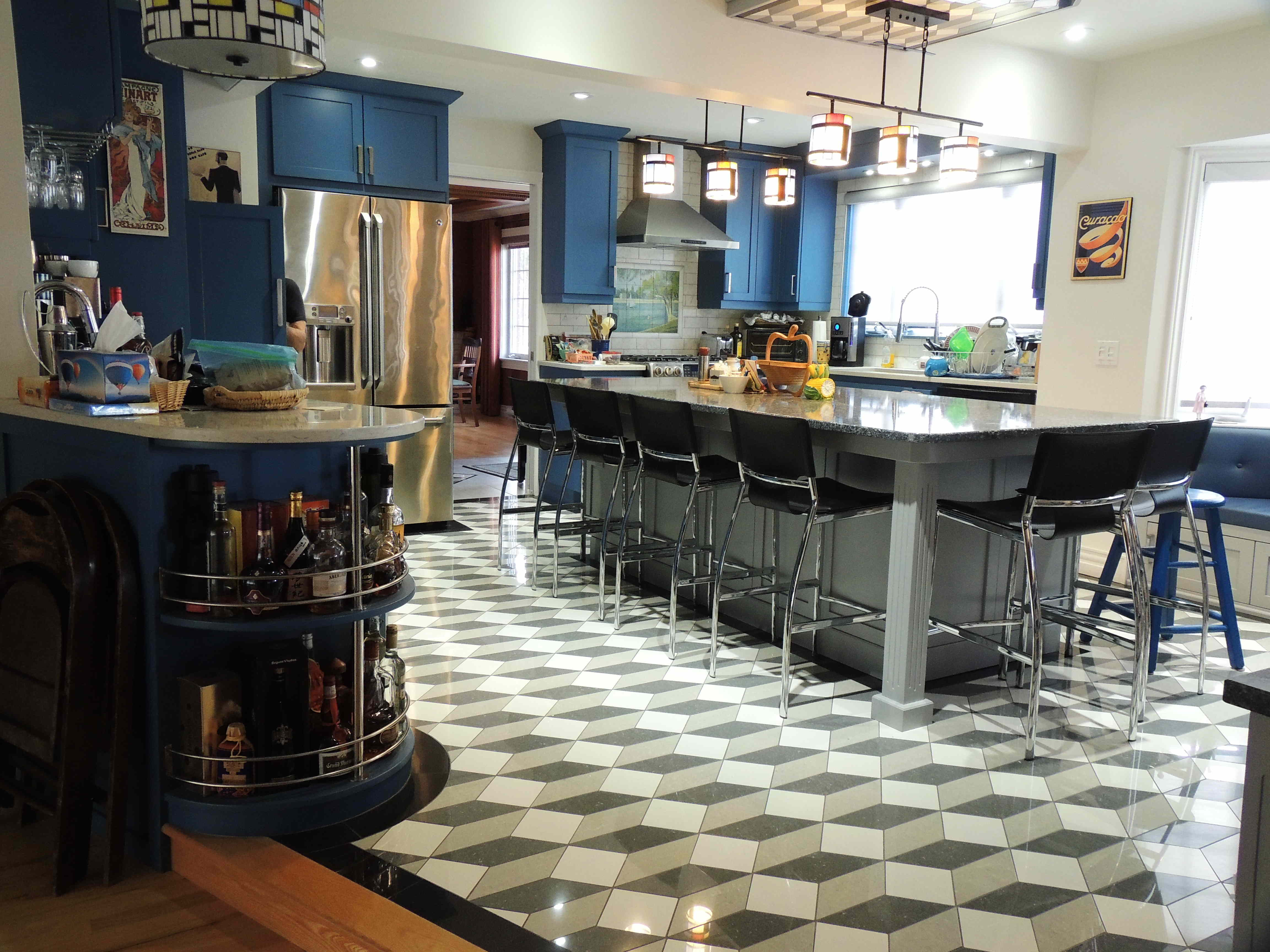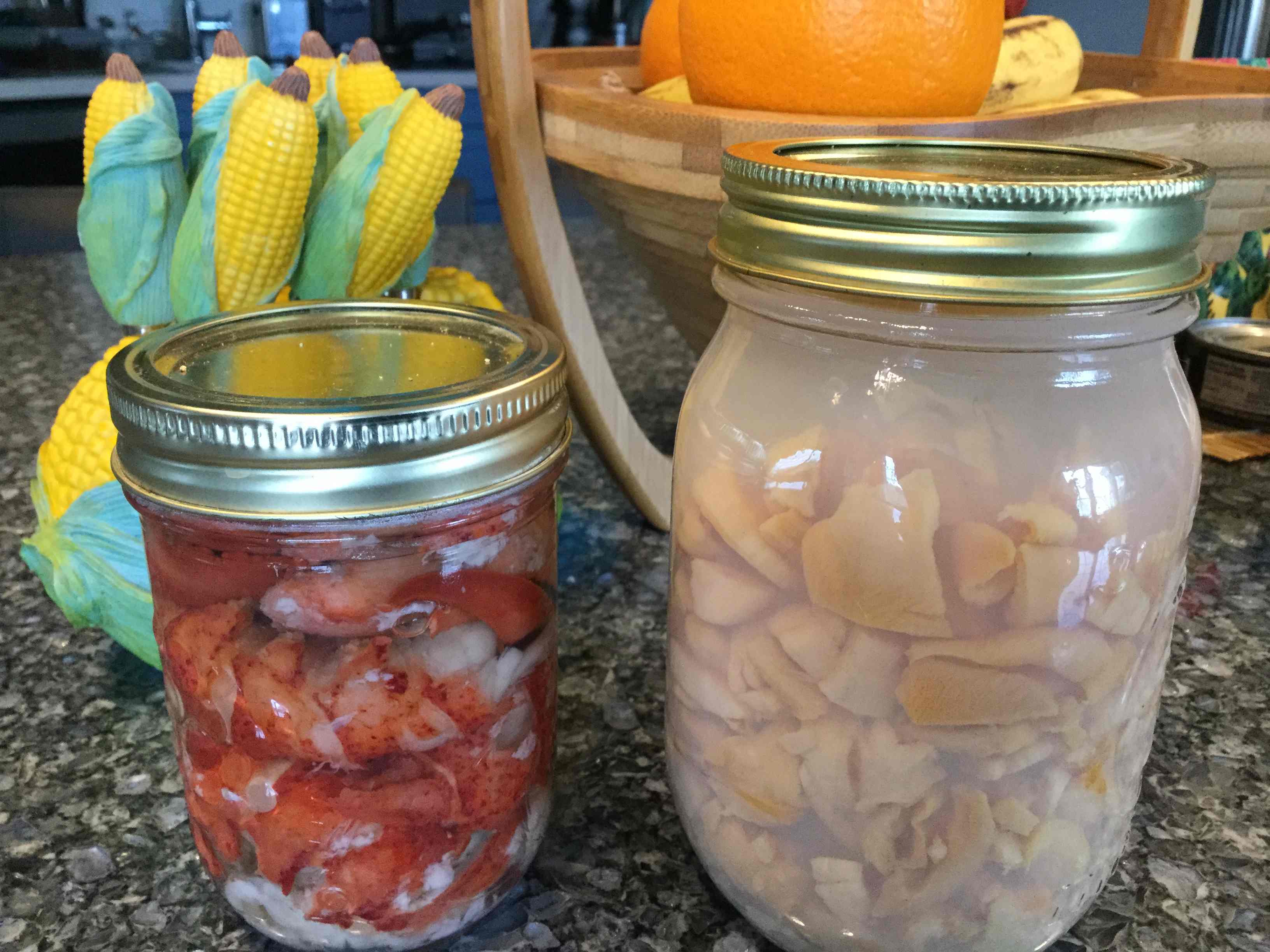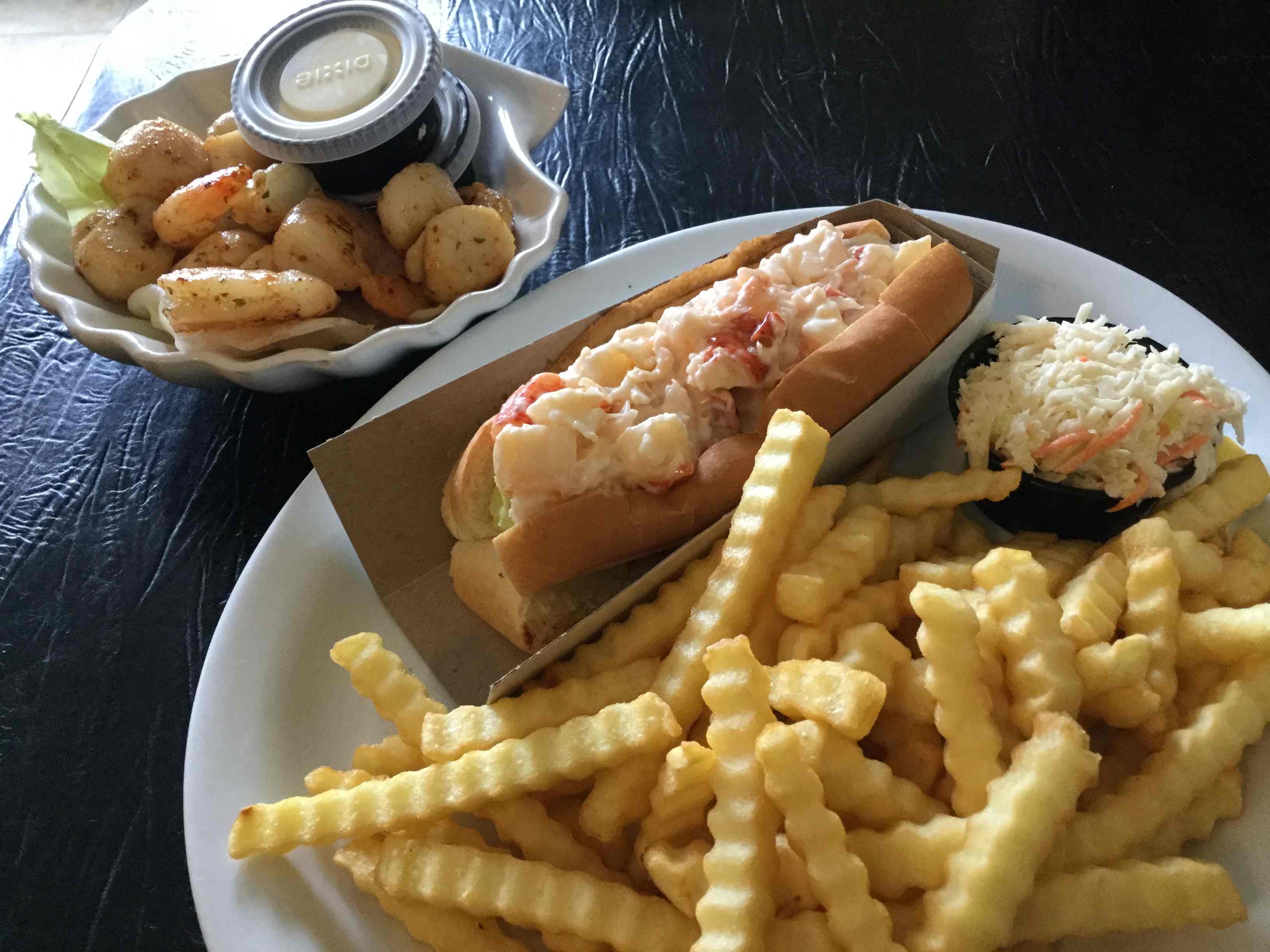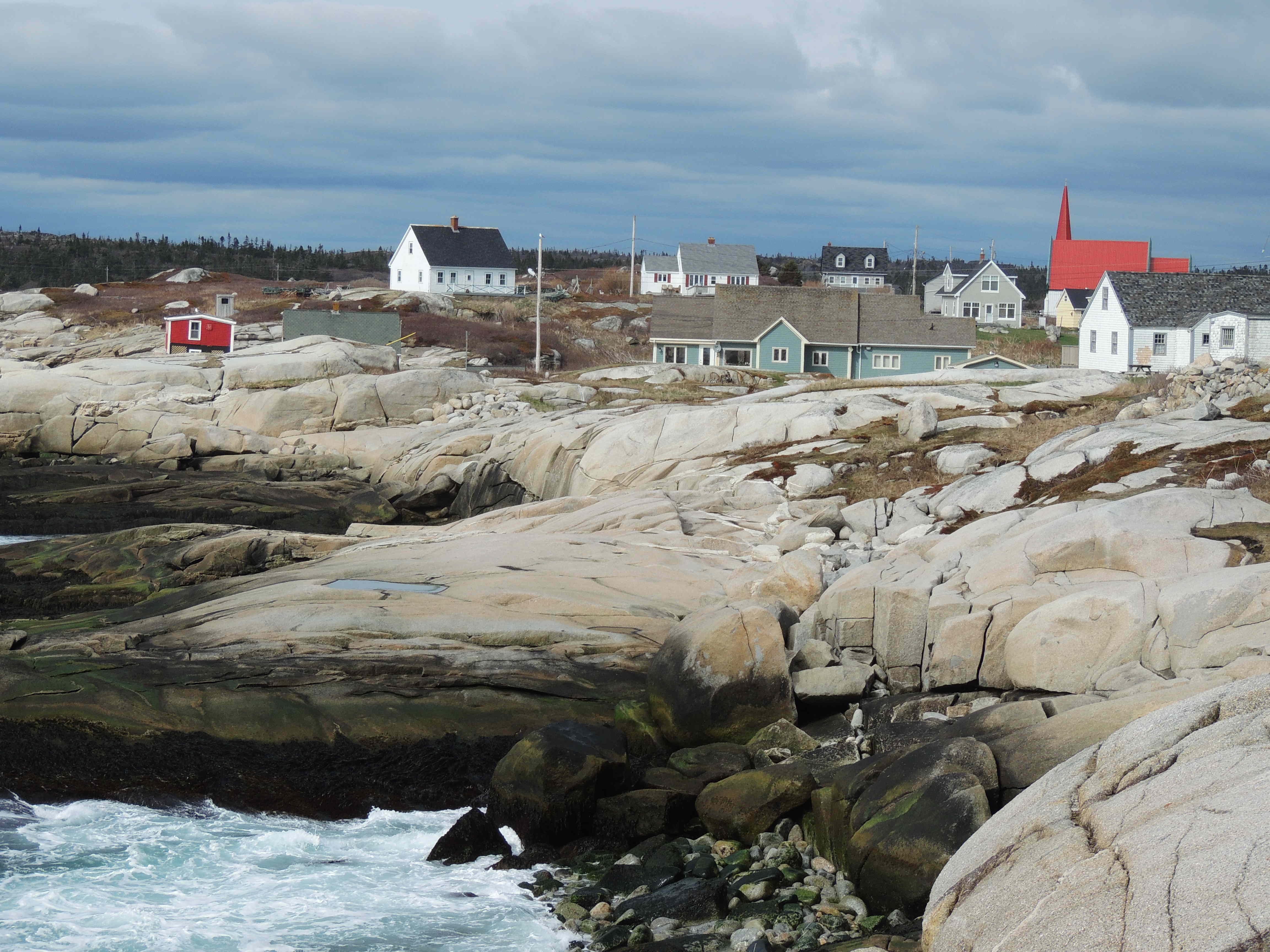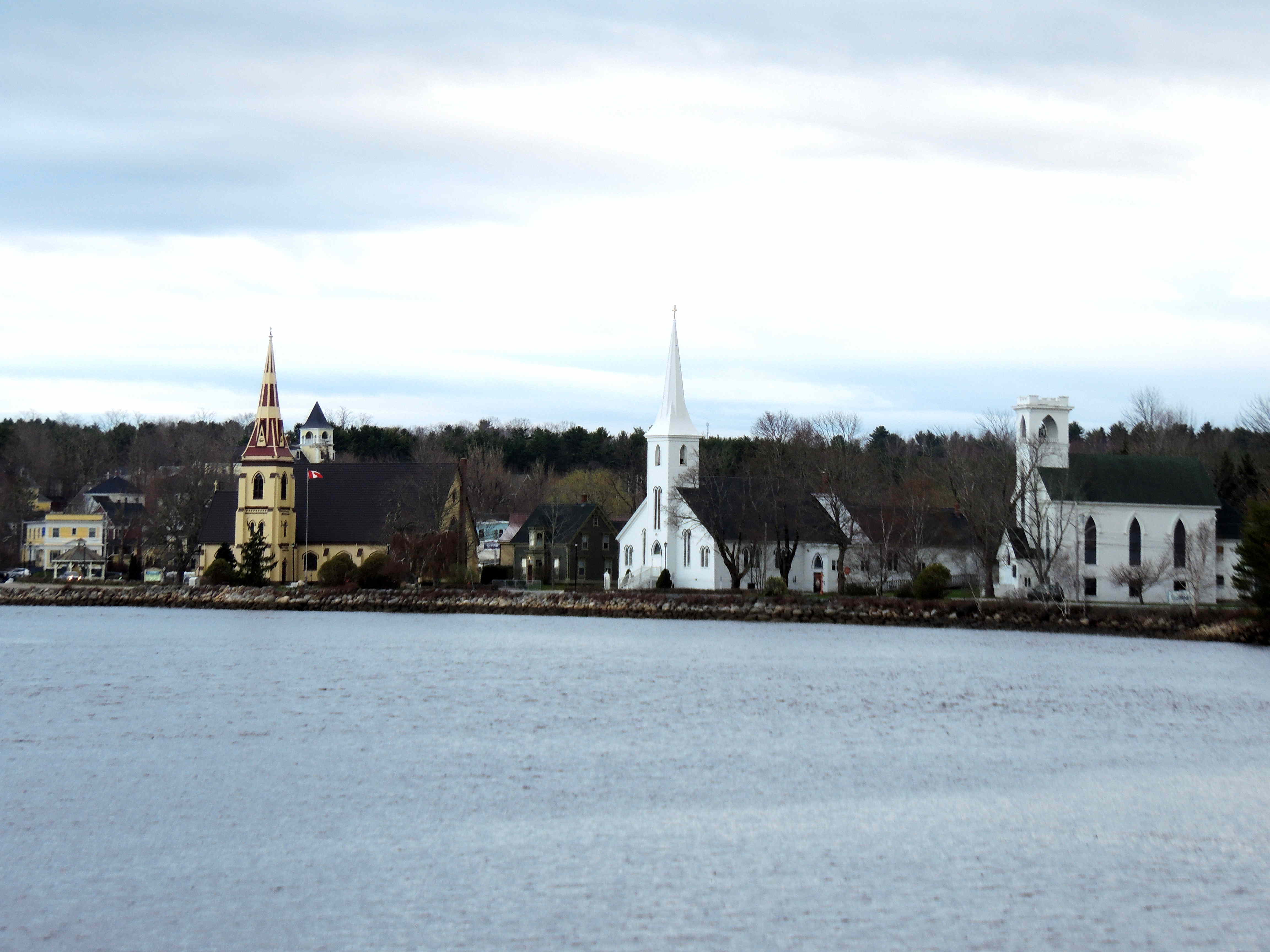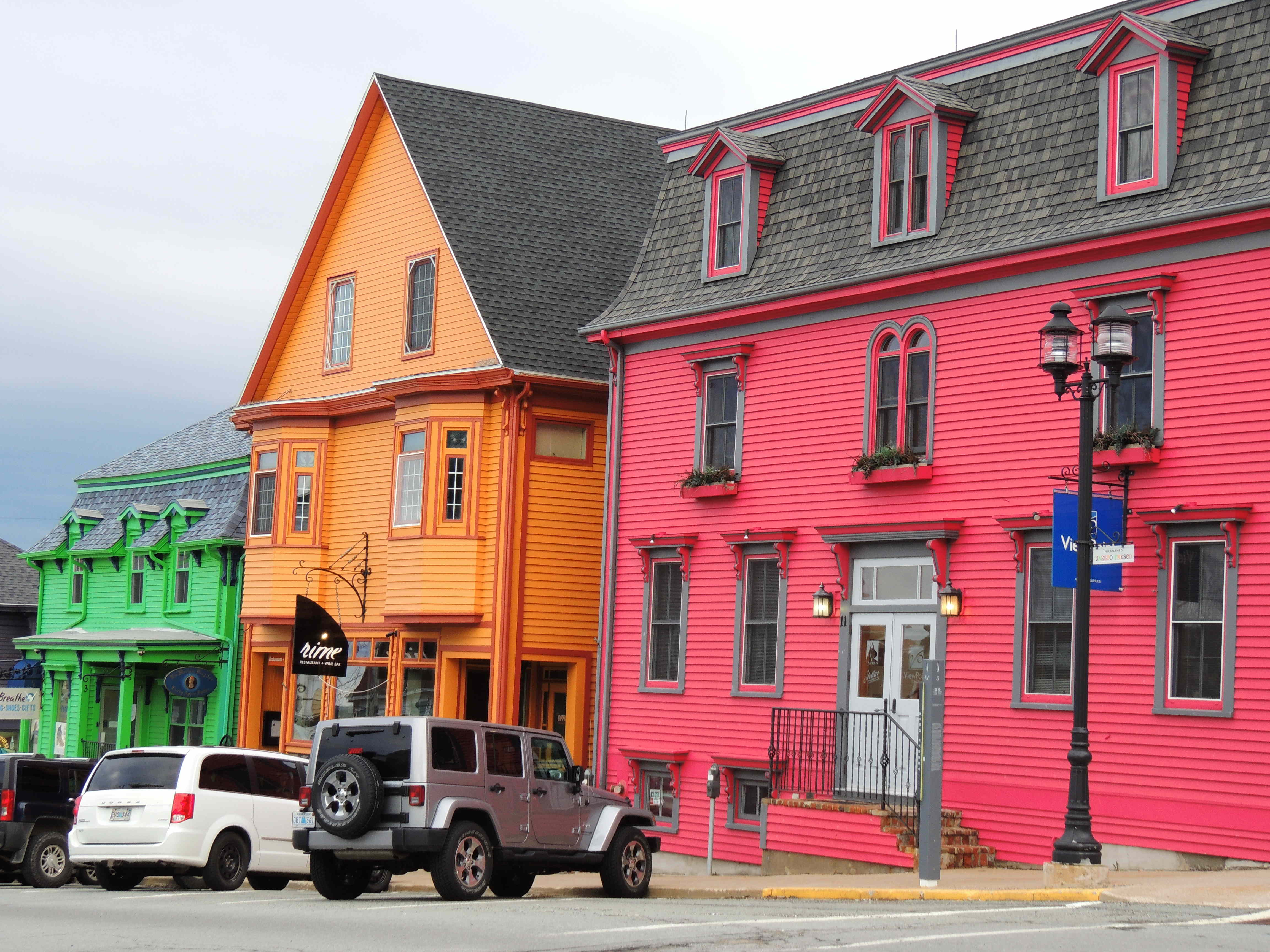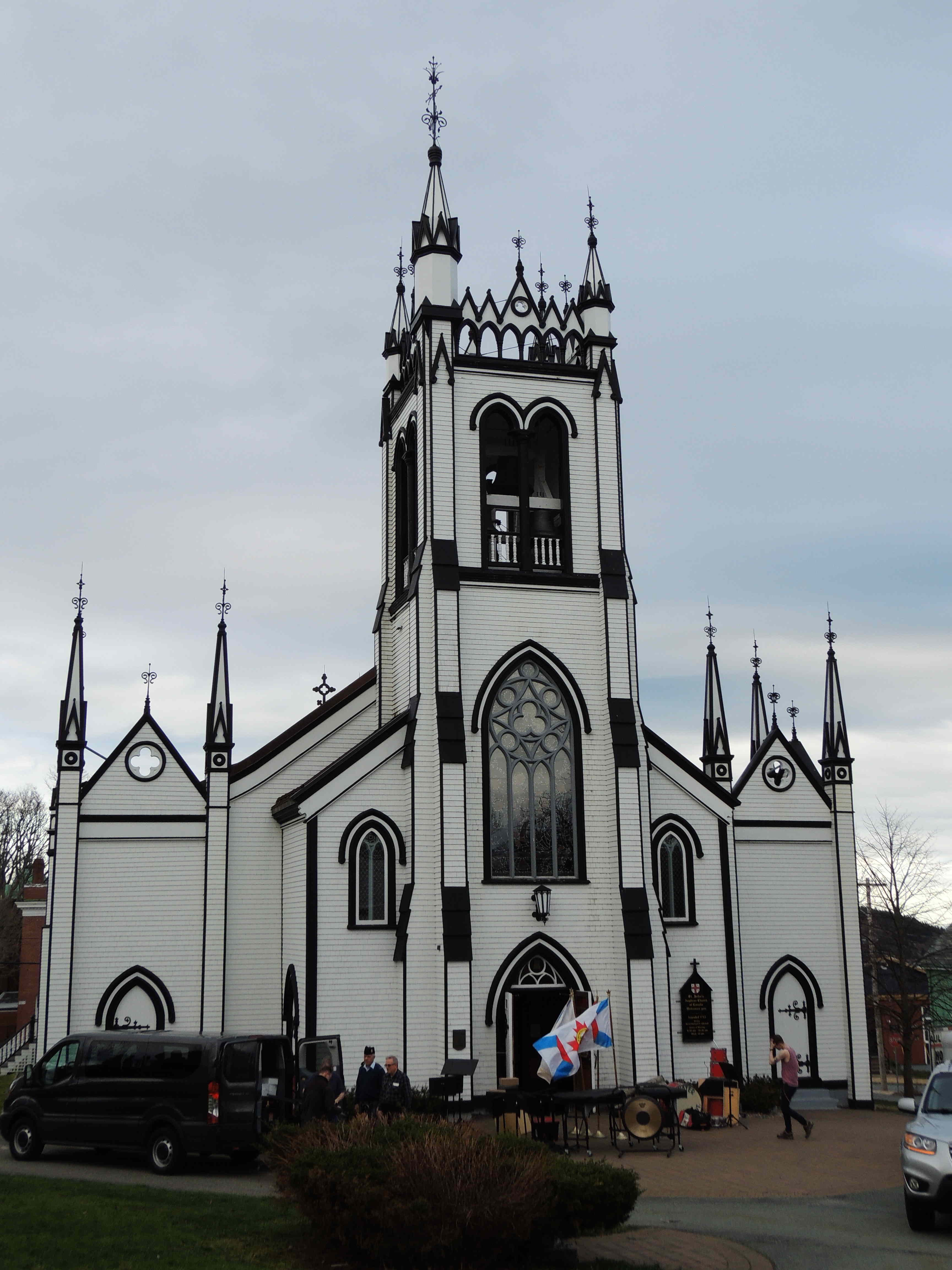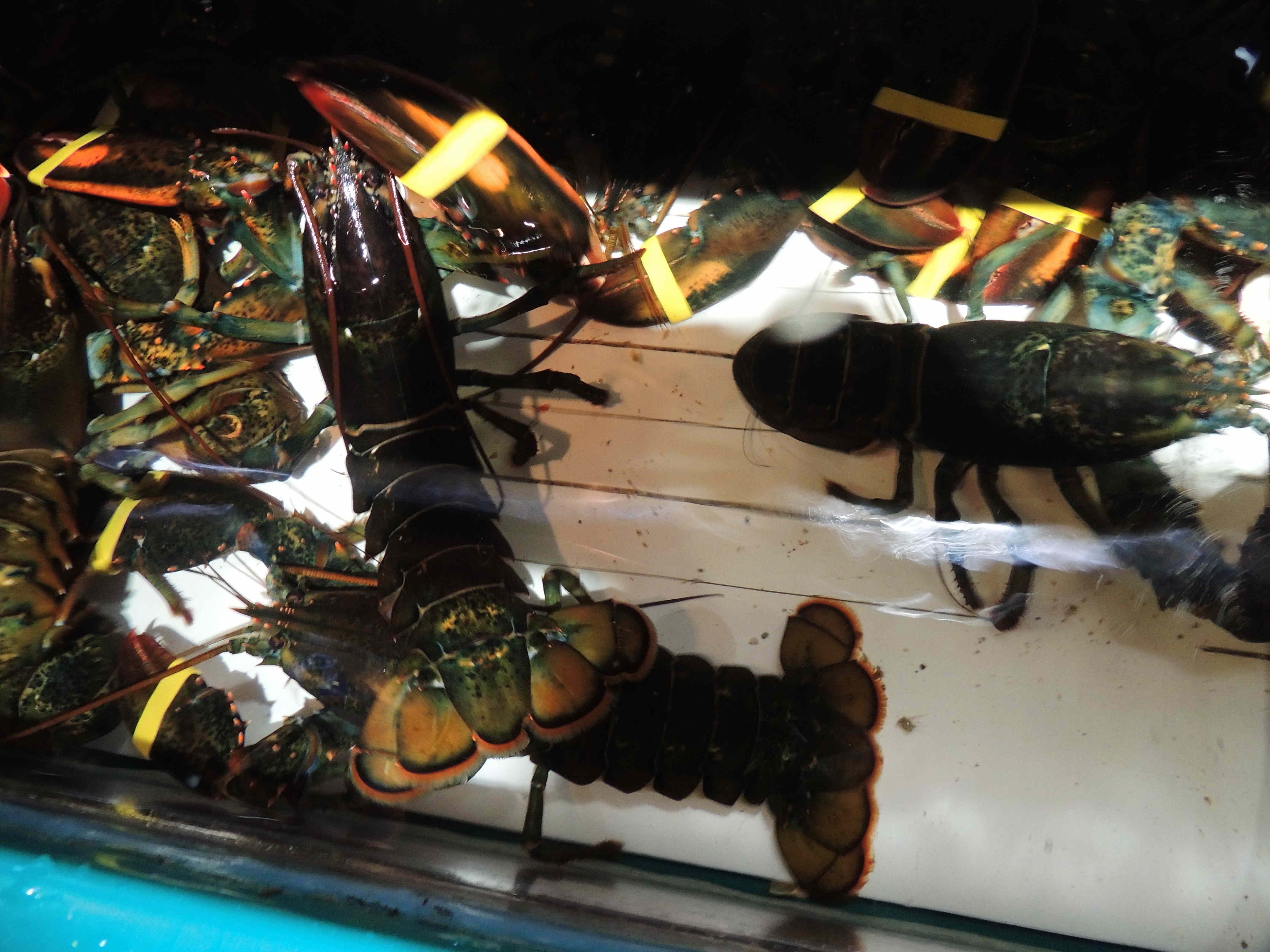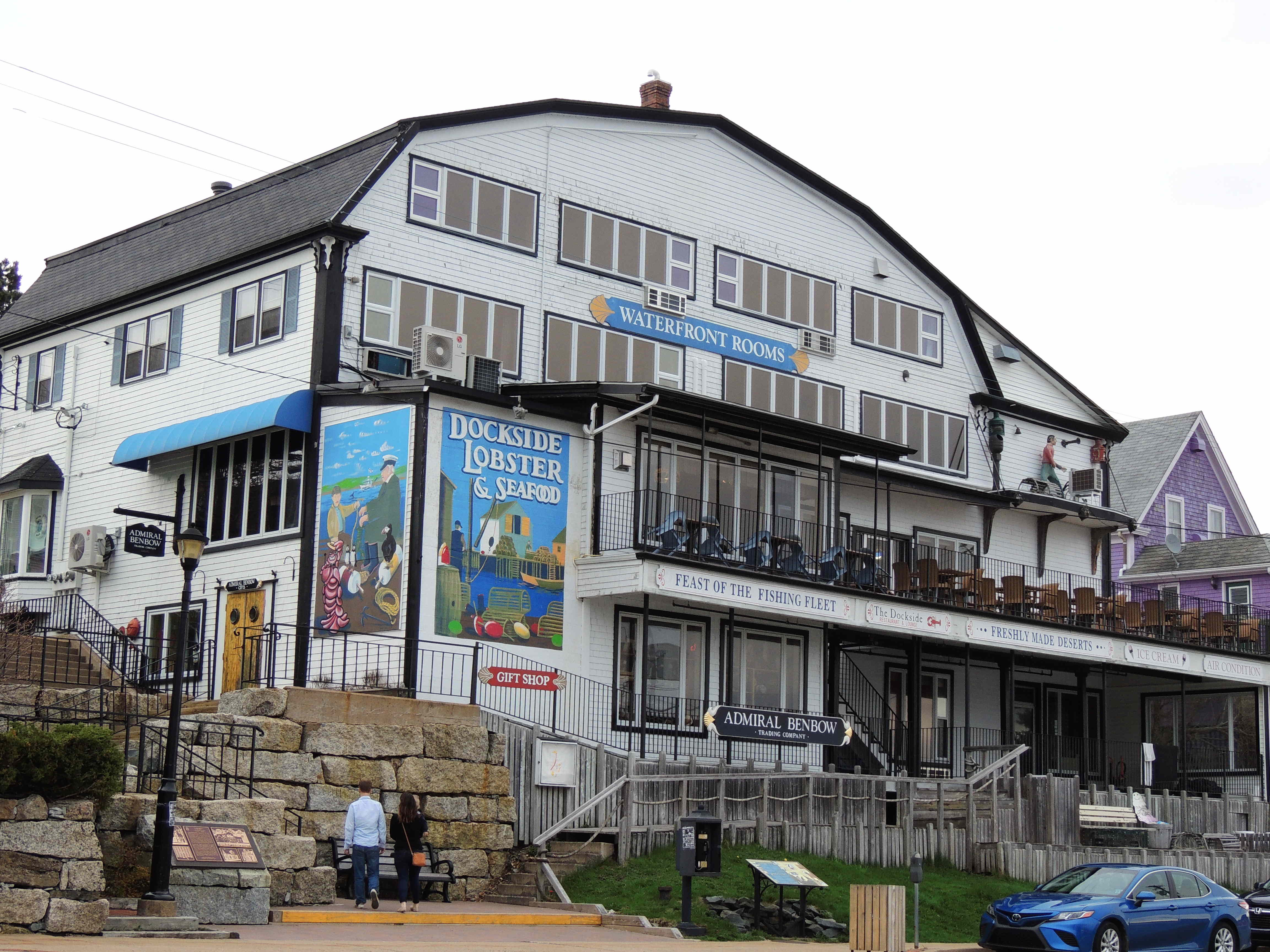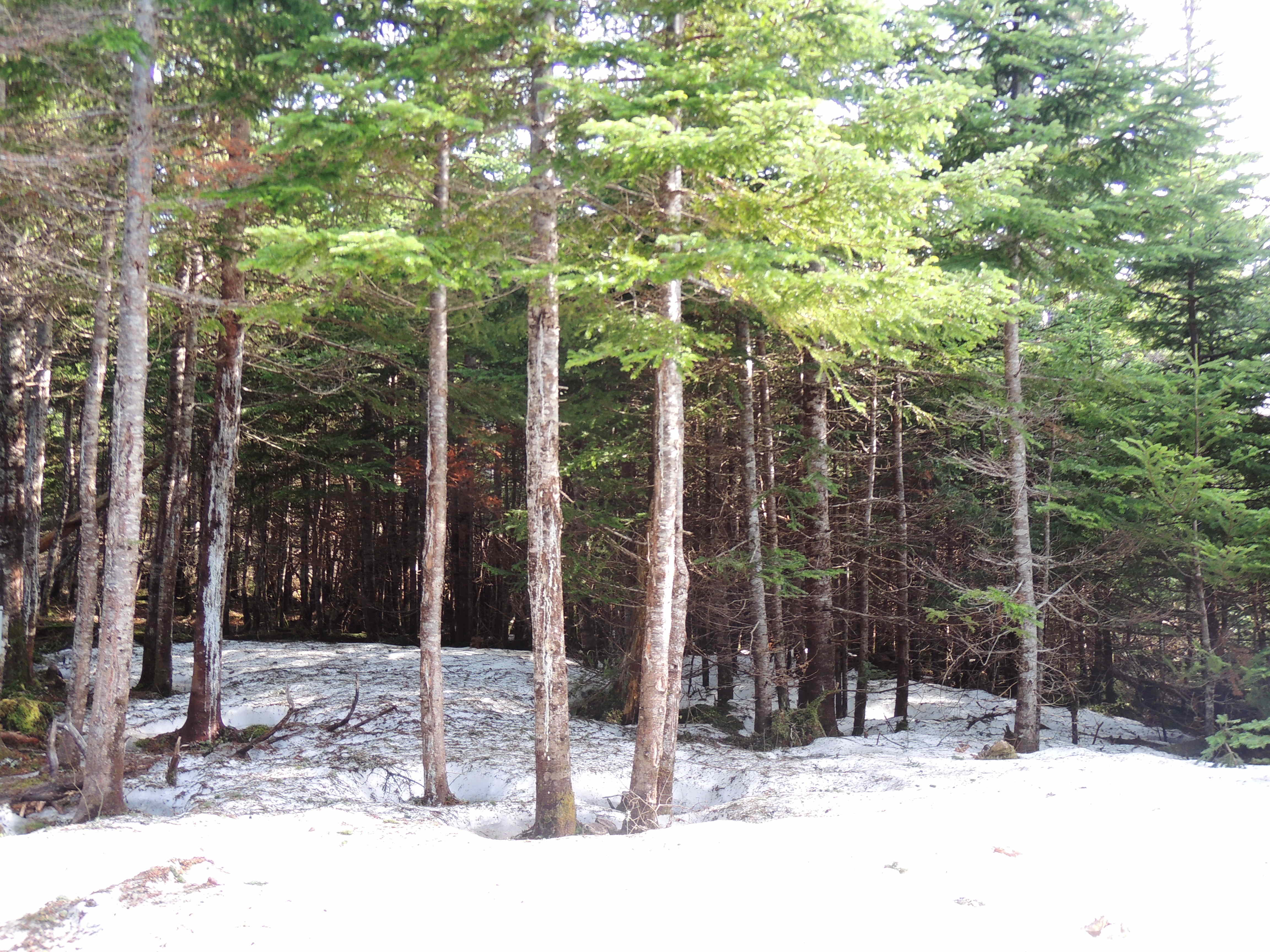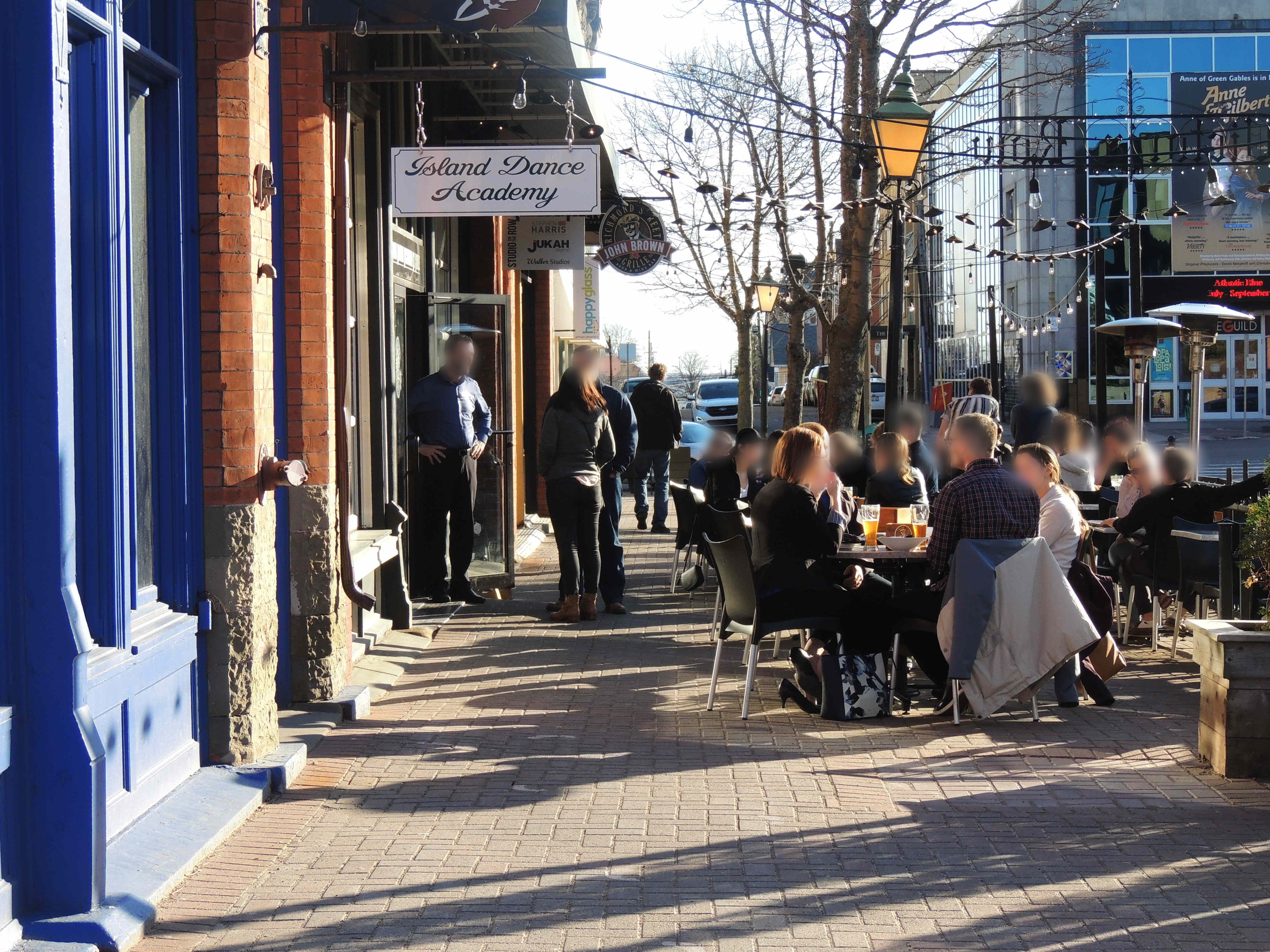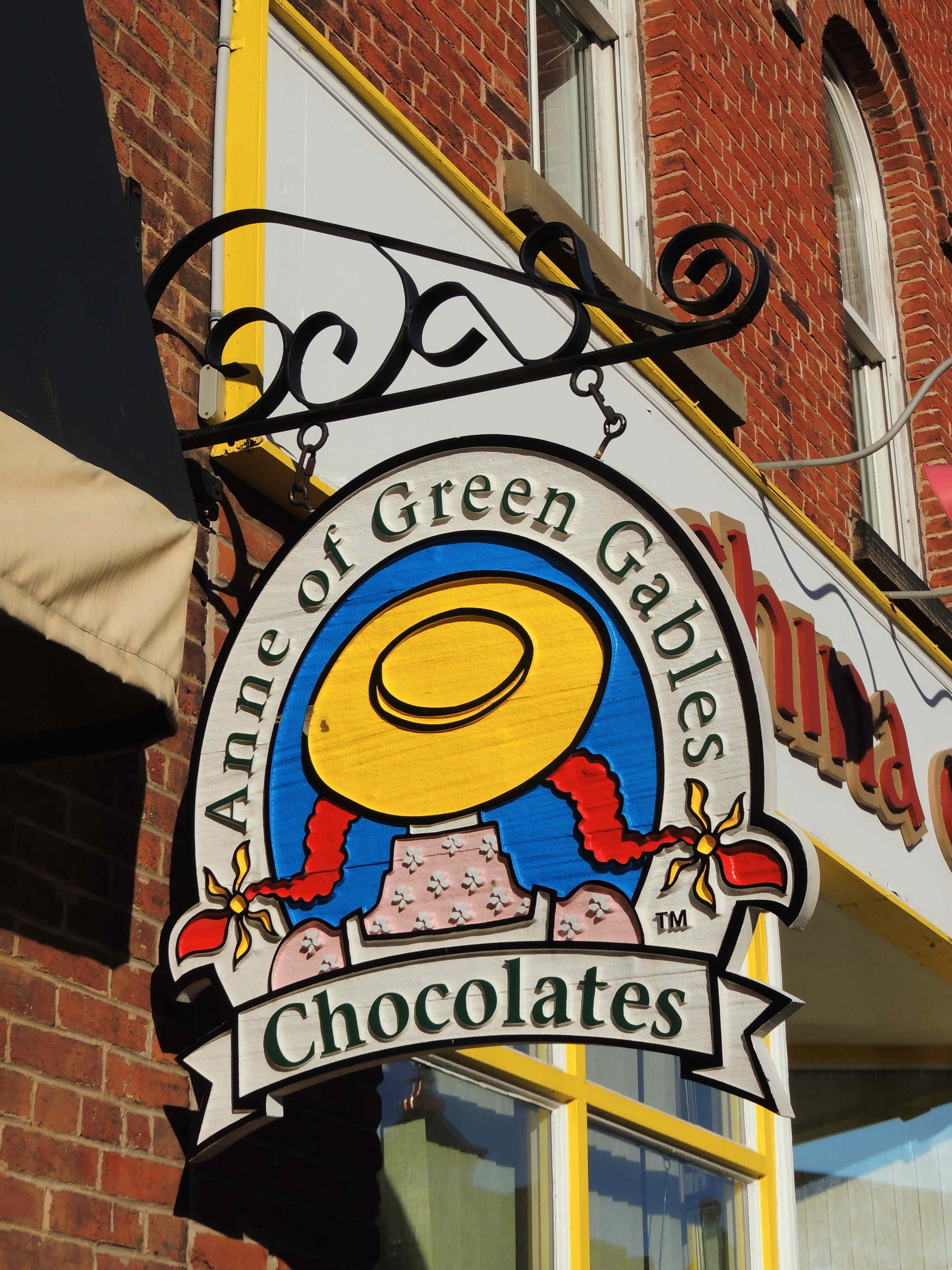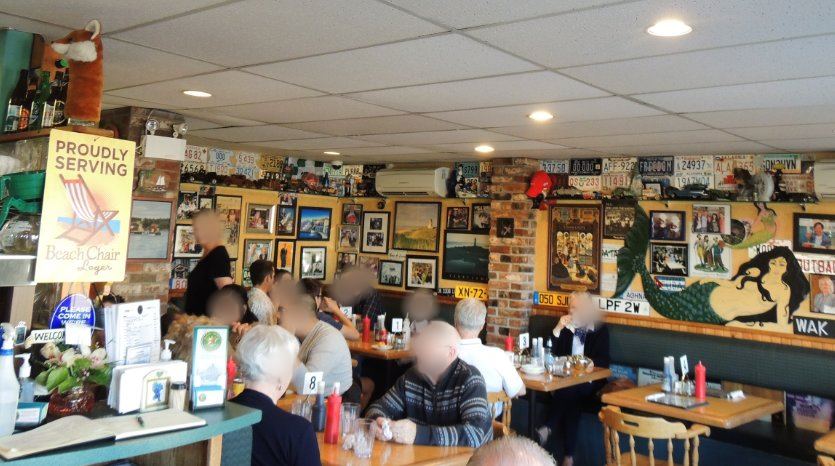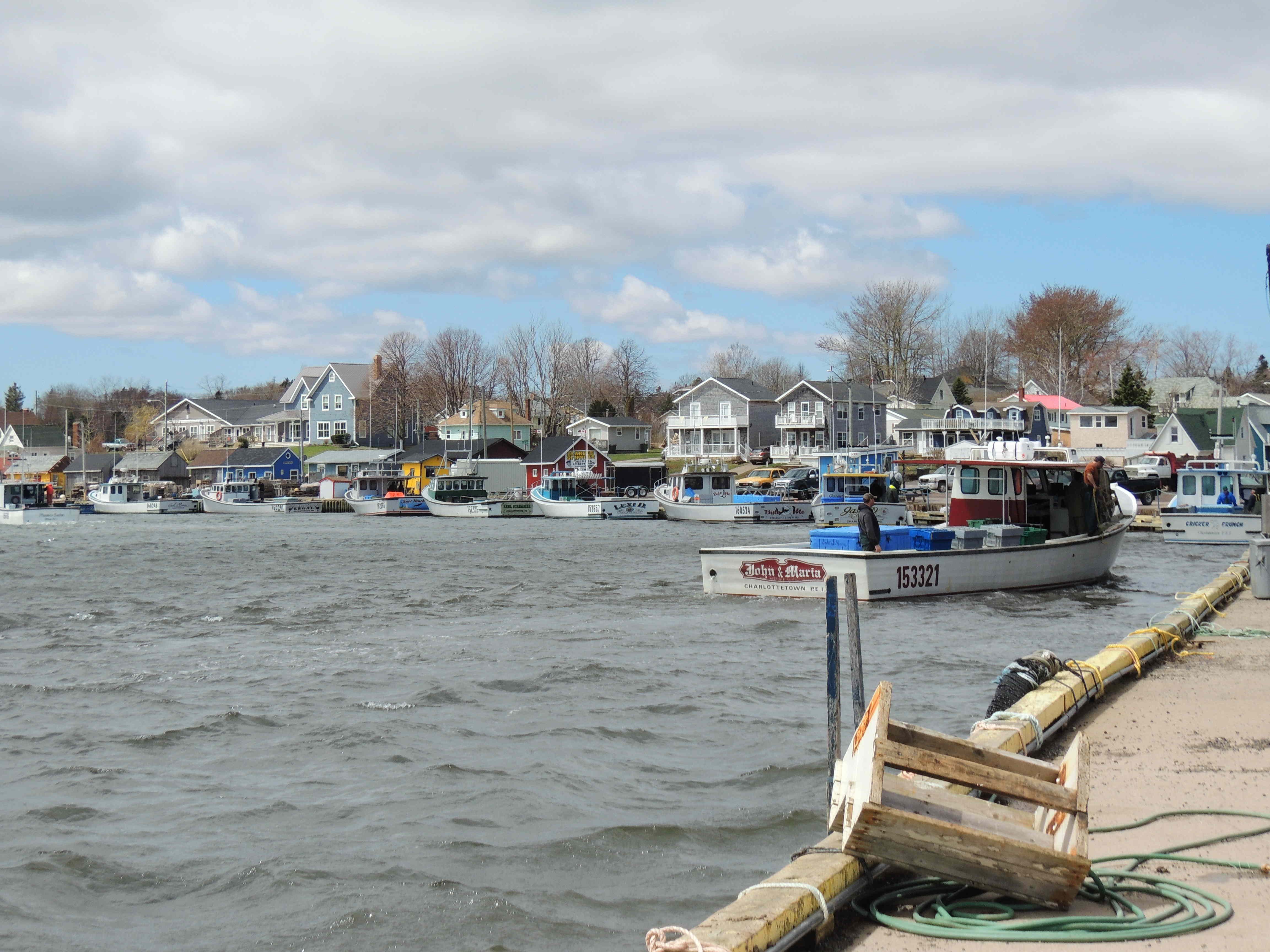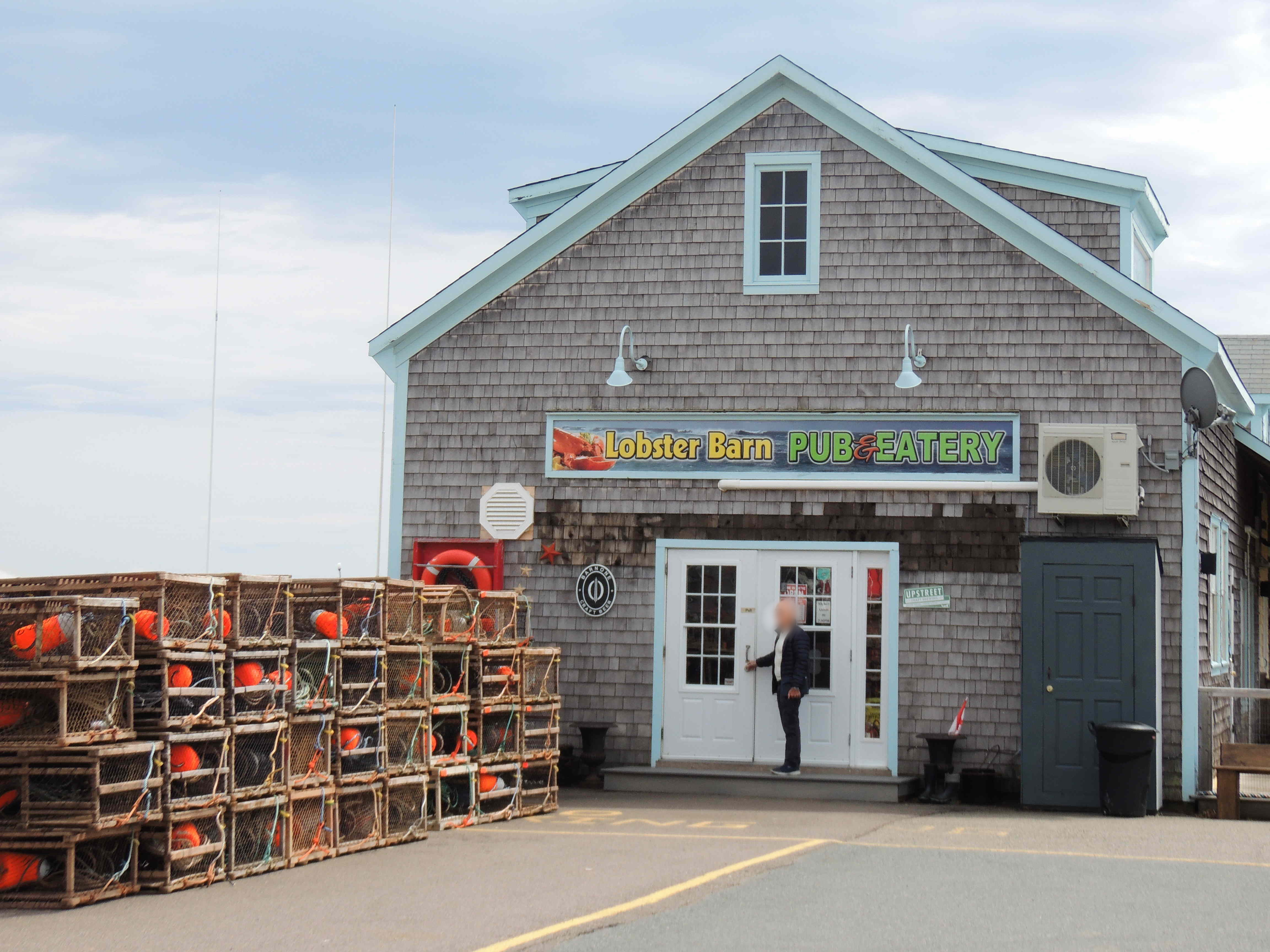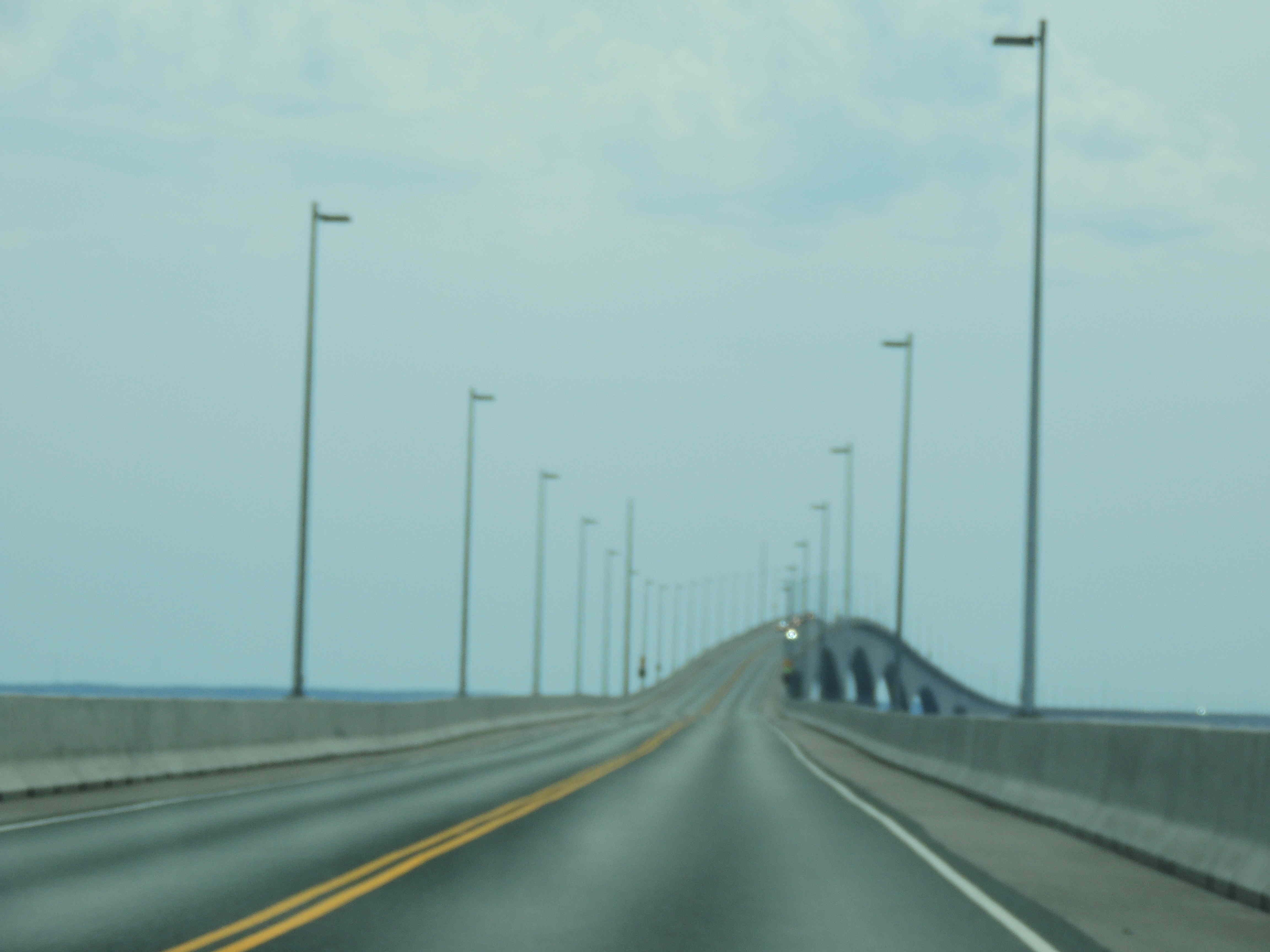This continues on from New Hampshire & Maine!
There are three “Maritime Provinces” in Canada: New Brunswick, Nova Scotia and Prince Edward Island. Combined with Newfoundland, the four are referred to as the “Atlantic Provinces”.
The direct flight distance from Fredericton (capital of New Brunswick) to St John’s (capital of Newfoundland) is around 1,100 kilometres, almost as far as flying direct from Melbourne to Coffs Harbour (north of Sydney).
We wouldn’t make it to Newfoundland, but we did visit the three Maritime Provinces. Combined they have a total area of 130,000 square kilometres (50,000 square miles), which is double the size of Tasmania; and just over half the size of the state of Victoria. The combined population is almost 2 million. Prince Edward Island is easily the smallest province in Canada with an area of 5,660 square kilometres (two and a half times the size of the ACT); but it is the most densely populated, with a population of around 150,000.
When driving through northern Maine we found that while some road surfaces were superb, often they were very poor if not appalling, even on major highways and freeways. The situation continued in Canada. We would later hear that the problem is the winter weather where water seeps into small cracks, freezes, then opens the crack further. That means that much road repair is needed once the snow thaws. Thus, when driving one had to watch carefully for damaged bitumen. And also look out for the locals.
The impact of snow was on show when we arrived at Fredericton, the capital of New Brunswick, where there were signs of some of the worst flooding on record due to the melting snow upstream. The city and its workers were under pressure; the art gallery had closed its lowest floor to move exhibits to other levels.
But we could still walk the streets of the city, which has many elegant buildings and beautiful housing mainly of wood, including the B&B at which we stayed, The Carriage Inn.
We would spend several days with Roger, one of Canada’s most acclaimed pianists. We would meet several of his friends and work associates, including the senior music professor at the University of Moncton. Two dishes he prepared for us stood out and we discuss the recipes in the next blog post. The following photos are of his state-of-the-art kitchen, which is both supremely functional and welcoming, and a photo of the preserved lobster and clams he used in his pasta dish (see later).
We made a day trip to the Bay of Fundy hoping to see the impacts of the tides – the biggest in the world with differences of up to 16 metres between low and high tide. We arrived right at high tide but could not wait for six hours for low tide. As it was, the weather closed in. Up close we could see the speed of the rushing water of the waning tide, and we still had atmospheric views of the lobster boats at the little port of Alma. Clearly in the warmer months Alma is popular, but we found only two food outlets open. We ate at a simple diner, but it was one of those memorable moments: a family run (“mom and pop”) concern, a friendly welcome, unpretentious décor, contented customers. To eat? Well, what else could we do when told the lobsters were straight off the boat but order yet another lobster roll, along with some local prawns and a hot coffee.
The next day we would go to Nova Scotia, but not before breakfast of Canadian salmon followed by maple syrup crepes at the home of some of Roger’s friends on the New Brunswick coast.
In this blog post, we have not included any photos of the main cities we visited. They all have their own special attractions of grand buildings, park lands, museums and attractive housing, albeit criss-crossed by extensive road and freeways systems and with US style shopping centres, car parks and fast food outlets on the outskirts.
It was the coastline and coastal towns which provided the most dramatic and picturesque scenes. The following photos are of the coast south of Halifax, the capital of Nova Scotia. Three were taken at Peggys Cove (including magnificent fish with both potato and sweet potato chips). One coastal town clearly demonstrated the role of the Church. The most breathtaking is Lunenburg, one of the cutest towns around, with a rebuilt church almost totally destroyed by fire.
With the lobster season just starting, it was not hard to find live ones and cooked ones.
One unexpected feature was to hear that Nova Scotia has an extensive wine industry. It seems vines were first planted there in the 1600s. There are now four main regions, but we would not have time to visit any. However, we sampled the wines whenever we could and very much enjoyed them.
The other unexpected feature in all three Maritime Provinces were the cultural impacts of the earlier settlers. There is a very strong French influence through the Acadians, descendants of French colonists from the 1600s and 1700s who settled in the maritime region and Maine. The French influence in the large province of Quebec further west comes from a different and quite distinct stage of French colonisation of Canada. We would thus learn that as a result of the historical differences in the two groups, the Acadian French and the Quebec French have different cultures, outlooks and aspirations. All three Maritime Provinces are bilingual in terms of signage, with signs generally in both English and French. The French influence emerges in other ways, for example, the University of Moncton is a French speaking university.
The influence of British settlers is also apparent in the three provinces, with so many place names sourced from the UK.
The British influence is especially strong on Cape Breton Island (part of Nova Scotia), where on the signage French is replaced by Scottish Gaelic.
We would spend three days on Cape Breton Island based at a small tourist town called Baddeck. From there we explored the national park and the coastline with its numerous fishing villages.
We stayed in a B&B called the Dunlop Inn right on the shore line. Right next door is the yacht club and it seems in the summer season huge cruise boats pull into the small jetty it is attached to. Passengers disembark to be taken around the famous Cabot Trail and visit the Alexander Graham Bell museum in the town.
We only had time for two days on Prince Edward Island. We arrived there on the car ferry and stayed two nights in the capital, Charlottetown. The capital is relatively small but it has its fair share of grand buildings and historical monuments. There were plenty of places to eat at. Our favourite was the Water Prince Corner Shop, an unpretentious, family style diner that serves seafood without the trimmings but which you know will be the freshest possible.
There are numerous places to visit on the island, with many small settlements. There are beaches, fishing ports and many facilities to cater for what seems to be a massive influx of visitors in the warmer months. Everywhere fresh seafood is apparent.
We would leave Prince Edward Island via the massive bridge that links it to New Brunswick.
We would soon be heading to Quebec, but losing some hours on the road by having to detour around the extensive flooding in New Brunswick.
Summing up our visit
We had spent 11 days in the Maritime Provinces. Certainly a fascinating area with plenty of history and rustic scenery. It is, however, well-off the beaten track and there are long distances to drive between key destinations. It is necessary to do plenty of research about what the region has to offer to make sure it is right for you. We had a friend to visit which provided the impetus for us to go there. It is certainly well worth the detour if you are fanatical about fresh seafood. We came away with three recipes we want to try when we return home.
Continued:
For a continuation of our travels, see: Three recipe ideas from the Maritime Provinces


